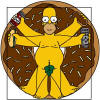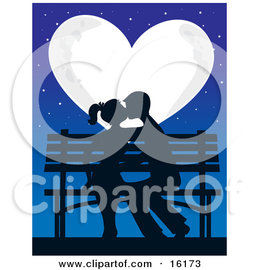Meteor Shower to Streak Across UAE Sky
10 August 2009 KT
DUBAI — Hundreds of meteors — the falling rocks from the annual passing of a comet — will light up the sky above UAE on August 12, astronomists said.
The celestial event began on July 17 and continues until August 24 but climaxes — with up to 10 meteors a minute — early in the morning of
August 12.
Hasan Ahmad Al Hariri, Dubai Astronomy Group President, encouraged residents to see the spectacle which appears to emanate from the constellation in the northern sky called Parshawyyat — Arabic for ‘bearer of Ghoul’s head’ — or Perseus named after the Greek
hero Perseus.
However, Al Hariri said the meteors are the debris falling from the Swift-Tuttle comet.
“Comets are basically like dirty snowballs — made of dirt and ice,” Al Hariri said.
“They are created at the outer rims of the solar system. As they move towards the sun, they warm up. The ice evaporates, taking chunks of dirt with it, leaving a tail behind the comet.
“The earth passes near this path every year and the meteors come from the material in the tail.”
Discovered back in 1862, this comet takes approximately 130 years to circle the sun. The majority of meteors are tiny marble size pebbles and dirt which burn up in the atmosphere but occasionally brighter ones occur — fireballs — that burn up upon entering
the atmosphere.
Ibrahim Al Jarawan, another UAE astronomer, in a statement on news agency Wam, said that a meteor’s diameter was about 1mm to 1cm.
”Generally, meteors are like small dust balls that penetrate the hemisphere of the earth then melt and evaporate due to their friction and interaction with the higher air layers.
“We can see these shooting stars like a lightening straight line moving in the sky as fast as 11-72 km/second,” he said.
Al Jarawan said that while a falling star has no sound it can be heard when it goes through the atmosphere making a ‘whispering’ noise. This is the fourth year the Dubai Astronomy Group has held observation nights for the Perseids meteor shower and Al Hariri said this year they would travel out to the desert on the Hatta Road to view the shower on the evening of August 11 to watch the meteors early on the morning of August 12.
Several other meteor showers happen during the year but Al Hariri said this was one of the best because of the brightness of the meteors, their frequency and that fireballs often
occurred too.
However, the viewing possibilities on the night will be limited by a bright moon which will make the meteors harder to see.
Al Hariri said residents needed to move out of the city, suggesting the beach or the desert, away from
light pollution.
Another factor which could make the meteors harder to see will be if a dust cloud occurs, as happened last week.
“Last year was really good because the moon was a new moon so there was no moon light. Even if the moon is at 20 per cent it is hard to see the meteors,” he said.
“The weather, so far, is expected
to be good.”
Tips to view the meteor shower
Find an open area without any lights and away from city — beach or desert
No special equipment is needed
Take a picnic rug and some snacks and settle in
The meteor shower begins about midnight and is most intense between 1am and 2am
Observation trip
Dubai Astronomy is conducting an observation trip which anyone can attend
Gather at Emirates Cooperative Society at Tawar 3 at 8.30pm
Visit www.dubaiastronomy.com or contact Hasan Ahmad Al Hariri on 0506246172
Dubai Forums Dubai Discussions Dubai General Chat
the message board for Dubai English speaking community


Meteor Shower To Streak Across UAE Sky
- xty
- Dubai Forums Veteran
-

- Posts: 1144
- Location: anywhere but Dubai
- Metaphor79
- Dubai Expat Helper
-

- Posts: 414
- Location: Dubai
- Reply
I've been out to watch this the last few years, it's really good. I actually went with that astronomy group last year, the guy is awsome and sents up the telescopes so you can see planets aswell as the meteors.
It's very interesting. Although I've never seen them at 10 a minute, usually dribs and drabs.
It's very interesting. Although I've never seen them at 10 a minute, usually dribs and drabs.
- Chocoholic
- Miss DubaiForums 2005
-

- Posts: 12829
- rudeboy
- Dubai Forums Zealot
- Posts: 3309
- Reply
Yeah you pretty much have to spend alinight out in the middle of the desert, so you need about an hours drive away from the city lights. We got back home around 5.30am last year. But it's worth doing, just once to see it.
- Chocoholic
- Miss DubaiForums 2005
-

- Posts: 12829
- Reply
Chocoholic wrote:Yeah you pretty much have to spend alinight out in the middle of the desert, so you need about an hours drive away from the city lights. We got back home around 5.30am last year. But it's worth doing, just once to see it.
sorry at 1am I am busy counting sheeps in my sleep
- rudeboy
- Dubai Forums Zealot
- Posts: 3309
- Chocoholic
- Miss DubaiForums 2005
-

- Posts: 12829
- rudeboy
- Dubai Forums Zealot
- Posts: 3309
- Chocoholic
- Miss DubaiForums 2005
-

- Posts: 12829
- rudeboy
- Dubai Forums Zealot
- Posts: 3309
- RobbyG
- UAE, Dubai Forums Lord of the posts
- Posts: 5927
- Location: ---
- Reply
So I presume there's a shower going on right now?
So anyone witnessing it? I can sense people making loads wishes....
Plz throw in a wish for me as well!
My friend's gone with his girlfriend onto the roof of a building. One large blanket for them to get all cuddly. Wonder if they'll catch any meteors.
So anyone witnessing it? I can sense people making loads wishes....
Plz throw in a wish for me as well!
My friend's gone with his girlfriend onto the roof of a building. One large blanket for them to get all cuddly. Wonder if they'll catch any meteors.
- Misery Called Life
- Dubai Forums Zealot
-

- Posts: 3033
- Reply
Oh crap, i didnt check the date. I hope i see something from my backyard >.< I thought it was the 11th
- MethoD
- Dubai Forums Frequenter
- Posts: 113
- Richardson
- Dubai Forums Member
- Posts: 40
- MethoD
- Dubai Forums Frequenter
- Posts: 113
- Reply
MethoD wrote:I didnt see anything, i guess im too close to the city, damn
try uncrossing those eyes dude, they're all over the shop!!
- Richardson
- Dubai Forums Member
- Posts: 40
- MethoD
- Dubai Forums Frequenter
- Posts: 113
- Richardson
- Dubai Forums Member
- Posts: 40
- Reply
Well its still going to carry on for a few more days so we might be lucky tomorrow
- MethoD
- Dubai Forums Frequenter
- Posts: 113
- Reply
You will not see anything if you are in or anywhere near the city, because of light polution. You have to drive out into the desert where it is virtually pitch black before you will see them.
- Chocoholic
- Miss DubaiForums 2005
-

- Posts: 12829
- love4peace
- Dubai Forum User
- Posts: 22
- Location: umm suqiem


-
- Related topics
- Replies
- Last post
-
- Perseid Meteor Shower by Chocoholic » Aug 10, 2008
- 0
- by Chocoholic |
Aug 10, 2008
-
- Soap or Shower Gel... by Ambassador » Jun 19, 2011
- 18
- by Bethsmum |
Jun 23, 2011
-
- Toilets are for taking a dump, not a shower by Medvezhonok » Nov 15, 2007
- 19
- by fayz |
Nov 22, 2007
-
- What colour sky would be the best? by the_zooter » Jun 06, 2006
- 20
- by the_zooter |
Jun 06, 2006
-
- Sky Diving by cadmus » Dec 04, 2005
- 2
- by cadmus |
Dec 05, 2005
